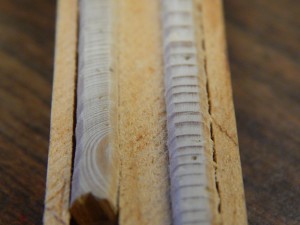Hello everyone! My name is Jessica Hernandez and I am originally from the Central Valley of California. Growing up with the valley at my feet, a trio of mountain ranges in my backyard, and the ocean never more than a short drive to the west, it’s no wonder why I have been passionate about studying biology since before I can remember! As a rising senior and Biology major at Pomona College in southern California, I’ve become increasingly curious and enamored with the field of conservation biology and amphibians. So what better way to spend my summer than to study one of the most interesting amphibians on earth: salamanders!
Under the mentorship of Dr. Jon Davenport, I will be studying the influence of behavioral traits on homing behavior in the northern spring salamander, Gyrinophilus porphyriticus, in the White Mountains of New Hampshire. To better understand this influence, I will be collecting two genetically divergent populations of salamanders from Kineo Brook and testing them for boldness or shyness traits. Afterwards, salamanders will be displaced from their original capture location to see if they successfully move back “home.” I’m looking forward to discover if there is an existing correlation between the boldness or shyness of a salamander and it’s movement towards or away from home.
Understanding the ability (or inability) of salamanders to return after being moved away from their home will shed some light on how such individuals would respond to displacement as a result of natural or anthropogenic events, such as extreme flooding, drought, or urban planning. Overall, the ultimate success of salamanders when it comes to homing may have significant consequences in terms of isolated populations and gene flow. The behavioral component of this study is also important to consider since the “boldness” or “shyness” of an individual may be significant in his or her ability to home—or respond to displacement—successfully.
As a study species, salamanders, like most amphibians, are extremely unique in that they breathe partially or entirely through their skin. Northern spring salamanders, in particular, belong to the family of “lungless salamanders” and rely completely on their skin to breathe. This porousness absorbs water as well as gases, such as oxygen and nitrogen, which makes salamanders extremely sensitive to environmental changes. Since salamanders are able to absorb pollutants, their decline over the past few decades is a significant cause for concern. Therefore, understanding their movements and ability to respond to natural events will give us a window into current, and potentially impending, population and ecosystem dynamics. And, hopefully, by the end of the summer we’ll be able to use boldness and shyness trends in salamander populations to predict some of these movements!
So far I am having an incredibly amazing time chasing salamanders in the streams of the White Mountains and exploring all of the natural treasures the Atlantic Northeast has to offer!















